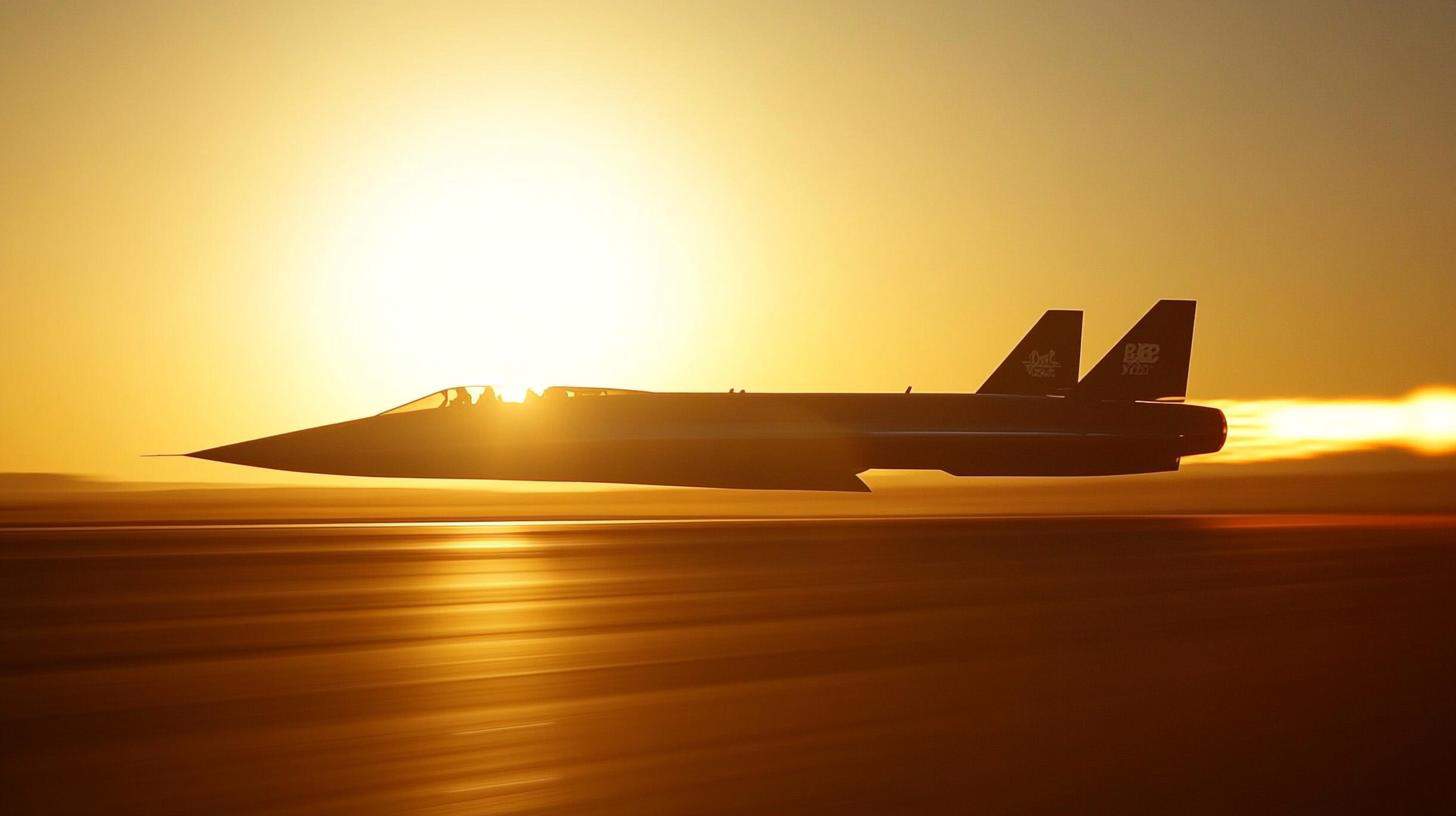In an exciting development for aviation enthusiasts worldwide, Boom Technology’s XB-1 supersonic aircraft recently achieved a major milestone in its quest for supersonic travel. This cutting-edge aircraft, also known as the “Son of Concorde,” has pushed past its previous boundaries, accelerating to a new peak speed of Mach 0.81 during a test flight over the skies of Mojave, California. This achievement marks a significant improvement from its prior top speed of Mach 0.67.
The test, conducted at an altitude of 23,015 feet, demonstrated the aircraft’s capability to reach 499 knots true airspeed. Piloted by the experienced Tristan “Geppetto” Brandenburg, the flight lasted around 55 minutes and focused on pushing the aircraft’s speed and altitude capabilities, crucial for its ultimate goal of breaking the sound barrier at Mach 1.
Beyond just speed, this test flight meticulously evaluated systems for flutter assessment, ensuring the aircraft’s structural integrity and pilot safety. Despite facing competition from aerospace giants like NASA and Lockheed Martin, Boom’s XB-1 is seen as a frontrunner in the race to revive supersonic passenger travel.
As Boom Technology continues to close in on the sound barrier, the potential to cut travel time dramatically is almost within reach. The XB-1 aims to revolutionize air travel by potentially reducing transatlantic flight times from eight hours to just three and a half hours. With ongoing tests, Boom Technology is committed to a future where supersonic travel is faster, safer, and more accessible.
The Supersonic Revolution: Beyond Speed in Modern Aviation
Unveiling a New Era of Supersonic Travel: How Will It Transform Our Lives?
While Boom Technology’s XB-1 supersonic aircraft continues to break new ground, reaching a new high of Mach 0.81 in its recent test, the broader implications of reviving supersonic travel are not yet fully understood. Beyond the excitement of shorter flight times, these advancements bring a multitude of effects on society, the economy, and the environment.
Community and Environmental Impact: Balancing Innovation and Sustainability
The potential reduction in travel time is tremendously appealing. Imagine flying from New York to London in just over three hours. This advancement could enhance productivity, allowing business travelers to save hours on international trips and even make round-trips on the same day. However, the practical implementation of supersonic travel introduces critical challenges.
From a community perspective, one significant issue is noise pollution. The “sonic boom” – a loud noise created when an aircraft surpasses the speed of sound – has historically been a barrier. These booms can disturb communities located underneath flght paths. Efforts are in place to minimize such disruptions, but the effectiveness of these strategies remains to be seen.
The environmental impact is another area of concern. Supersonic aircraft typically consume more fuel due to their higher speeds, which could lead to increased carbon emissions unless significant advancements in fuel efficiency or alternative energy sources are made.
Economic Controversies and Potential
Economically, the development of supersonic travel presents both opportunities and risks. The potential for a lucrative luxury travel market is high, as time-sensitive travelers may be willing to pay a premium for faster flights. On the downside, the high operational costs could translate into very expensive ticket prices, potentially limiting accessibility to a select group of wealthy travelers, thus widening the socioeconomic travel gap.
Advantages and Disadvantages: A Double-Edged Sword
Advantages of supersonic travel include:
– Time Efficiency: Significant reductions in flight duration can change the global travel landscape.
– Economic Growth: Possible creation of new jobs and growth in the aviation and ancillary industries.
– Technological Advancements: Pushing the boundaries of what’s possible leads to innovations that can trickle into other industries.
However, the disadvantages are equally compelling:
– Environmental Concerns: Increased fuel consumption and emissions.
– Noise Pollution: Potential disturbances to communities under flight paths.
– Economic Disparities: Exclusivity could limit widespread adoption and benefits.
Critical Questions and Answers
What technological innovations are necessary for sustainable supersonic travel?
Continuous advancements in materials science, alternative fuels like biofuels, and the development of quieter engine technology are essential for making supersonic travel sustainable.
Can supersonic travel ever be as accessible as current commercial flights?
It’s ambitious but possible. Advances in technology could help reduce costs over time. However, significant regulatory, technological, and economic challenges remain.
For More Information
For those interested in exploring further about aviation advancements and their implications, resources are available at the following sites:
– Boom Supersonic
– Nasa
As we stand on the brink of a new era in faster-than-sound travel, the pursuit of supersonic flight is both thrilling and complex. Balancing innovation with environmental stewardship, economic feasibility, and social responsibility will define the future impact of this groundbreaking technology.







